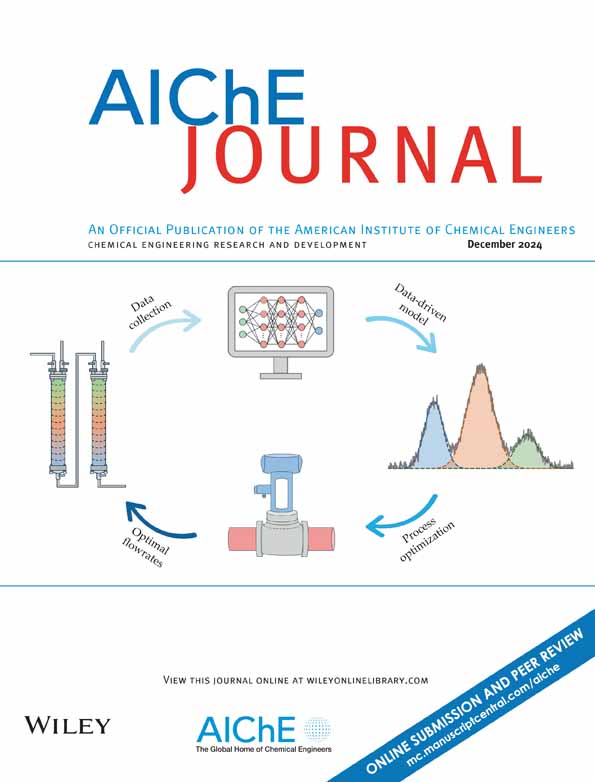Computational molecular engineering of ionic liquids for CO2 drying: Design strategies and molecular mechanisms
IF 3.5
3区 工程技术
Q2 ENGINEERING, CHEMICAL
引用次数: 0
Abstract
Gas drying, as an important unit operation in the field of chemical engineering, is critically dependent on the selection of an efficient solvent. In this work, a computer‐aided ionic liquid design method was used to design ionic liquids for CO用于CO2干燥的离子液体的计算分子工程:设计策略和分子机制
气体干燥作为化工领域中一项重要的单元操作,其关键取决于高效溶剂的选择。本文采用计算机辅助离子液体设计方法对CO2干燥用离子液体进行了设计。合成了一种候选离子液体,并根据H2O的饱和蒸汽压和CO2的溶解度对其干燥性能进行了实验评价。利用随机森林模型对离子液体中的CO2溶解度进行了预测。采用SHAP分析探讨不同离子液体结构对溶解度的影响。利用量子化学计算和分子动力学模拟研究了分子间相互作用的类型、相互作用的位置和分子在气液界面的分布。结果表明,离子液体具有良好的干燥潜力,阴离子与水之间的强氢键在分离过程中起主导作用。
本文章由计算机程序翻译,如有差异,请以英文原文为准。
求助全文
约1分钟内获得全文
求助全文
来源期刊

AIChE Journal
工程技术-工程:化工
CiteScore
7.10
自引率
10.80%
发文量
411
审稿时长
3.6 months
期刊介绍:
The AIChE Journal is the premier research monthly in chemical engineering and related fields. This peer-reviewed and broad-based journal reports on the most important and latest technological advances in core areas of chemical engineering as well as in other relevant engineering disciplines. To keep abreast with the progressive outlook of the profession, the Journal has been expanding the scope of its editorial contents to include such fast developing areas as biotechnology, electrochemical engineering, and environmental engineering.
The AIChE Journal is indeed the global communications vehicle for the world-renowned researchers to exchange top-notch research findings with one another. Subscribing to the AIChE Journal is like having immediate access to nine topical journals in the field.
Articles are categorized according to the following topical areas:
Biomolecular Engineering, Bioengineering, Biochemicals, Biofuels, and Food
Inorganic Materials: Synthesis and Processing
Particle Technology and Fluidization
Process Systems Engineering
Reaction Engineering, Kinetics and Catalysis
Separations: Materials, Devices and Processes
Soft Materials: Synthesis, Processing and Products
Thermodynamics and Molecular-Scale Phenomena
Transport Phenomena and Fluid Mechanics.
 求助内容:
求助内容: 应助结果提醒方式:
应助结果提醒方式:


